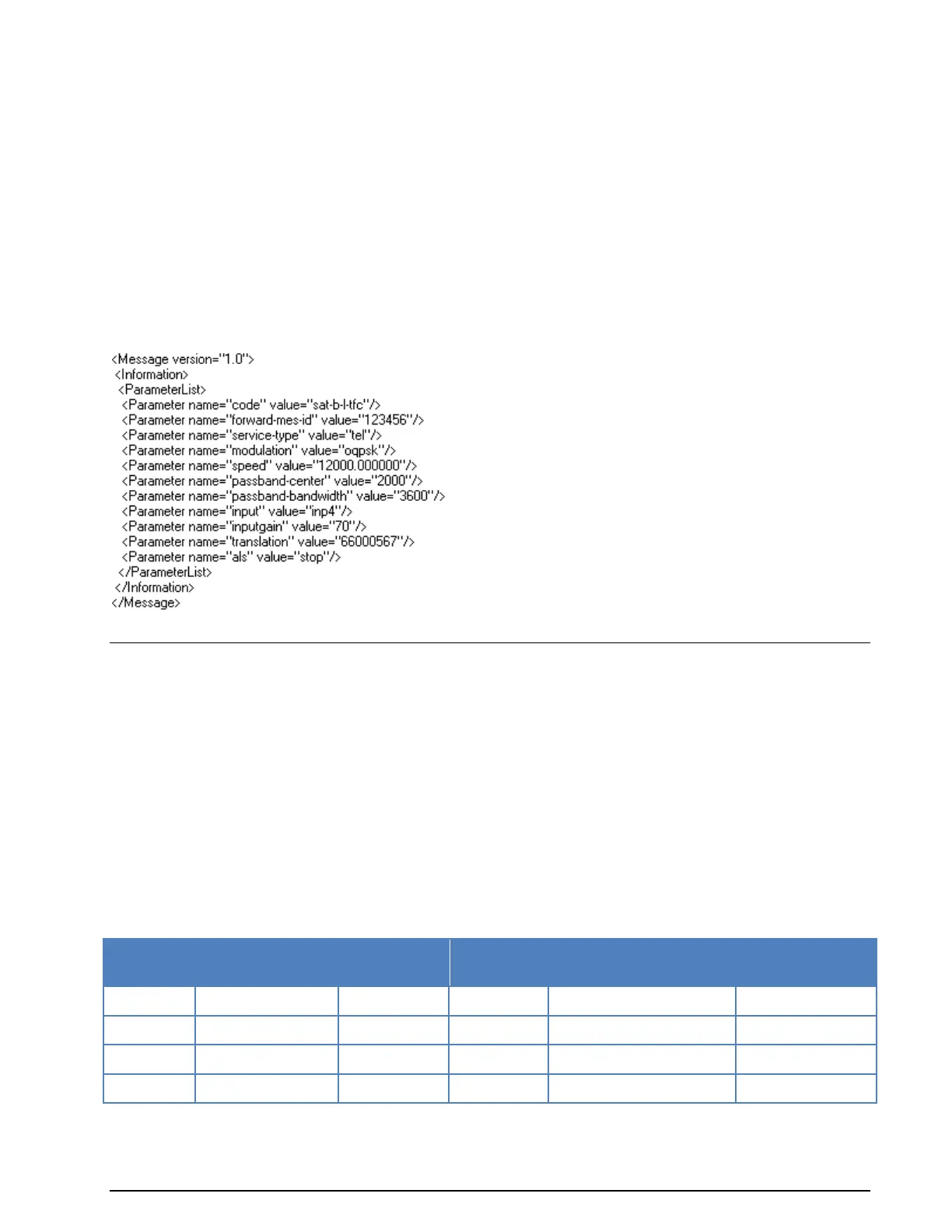WAVECOM Decoder W74PC, W-PCI/e, W-CODE, W-CLOUD Manual V9.1.0 SAT System
303
Traffic-Channel Decoder
If monitoring the forward direction in SAT-B, SAT-M or SAT-mM, it is necessary to extract information
from the control channel (NCSC) in order to achieve for proper decoding.
The following stand-alone traffic channel decoders are available:
SAT-B-C-TFC
SAT-B-L-TFC
The SAT-B-C-TFC-mode can be started via the GUI, whereas the SAT-B-L-TFC can only be started via the
XML-RCI.
For proper decoding the SAT-B-L-TFC decoder requires the MES ID and service type (TEL, FAX, DATA)
from the control channel. The user may start traffic channel decoding by setting these two parameters in
addition to the offset frequency.
The following picture shows the XML parameter set for the SAT-B-L-TFC mode.
The Sat Aero System
The Aero services differ in a number of ways from the maritime and land mobile Inmarsat services. Among
other characteristics, the Aero system uses specially adapted modulation formats as Aviation-BPSK (A-
BPSK) which is differential BPSK and Aviation QPSK (A-QPSK), which is a variant of Offset QPSK (OQPSK).
Services
A number of services are available, as listed below. Voice uses the circuit switched C-channel, whereas da-
ta uses the P-channel in the forward direction and the T- or R-channels in the return direction, depending
on the size of data to be transmitted (R-channels are used for single signal unit messages). Two data ser-
vices are available:
Data-2: Used for ACARS over satellite messages on OSI layer 2 (data link layer)
Data-3: Used for Aeronautical Telecommunication Network (ATN) OSI-protocol traffic on OSI layer
3 (network layer)
Circuit Switched
Channel Rate
